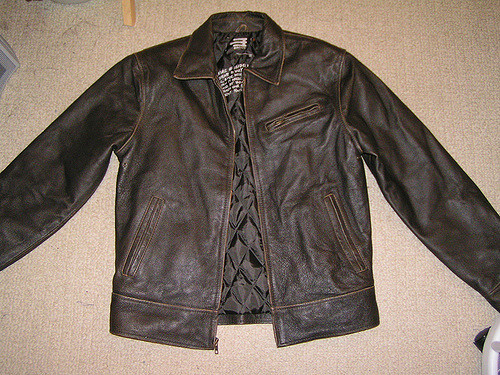If not cared for properly, leather can dry and become stiff over time. When this happens, it loses its original look and becomes less comfortable and more prone to cracking, which is something you certainly want to avoid. Read on to learn how to soften leather.
How to Soften Stiff Leather?
Leather is among the most stylish and versatile fabrics on the planet. Being that it’s made from animal hide and not a synthetic/man-made material, it possesses certain qualities that aren’t found elsewhere. For instance, leather is supple, smooth, and has a natural “grain” that enhances the wearer’s appearance.
But it’s not uncommon for certain types of leather to become stiff. This isn’t something that happens overnight, but rather months or even years of usage may stiffen the material to the point where it is no longer comfortable to wear. So, what can you do to soften stiff leather?
What Causes Leather to Become Stiff?
Before we reveal the steps to softening leather, let’s first discuss what makes it stiff in the first place. There are a few possible causes of stiff leather, one of which is simply its quality. Not all leather is made equal, as some varieties are made with higher quality hides and craftsmanship than others.
Products made with full-grain leather tend to yield the highest quality, simply because the hides from which they are made have not been buffed, sanded, or snuffed, whereas split and corrected-grain leather are two of the lower quality varieties. You can expect to pay more for high-quality full-grain leather, but this is a case in which the mantra “you get what you pay for” holds true.
Even though you’ll spend more on high-quality leather products, the higher cost also buys greater longevity and resistance to stiffness and damage.
Leather may also become stiff when improperly stored. I think most people are guilty of tossing their coats, leather jackets, shirts, and other garments in the closet without considering the environmental conditions and how it will affect them.
Even if the air feels comfortable, it could be harboring a significant amount of moisture vapor, in which case certain garments, such as those made of leather, could become saturated to the point where they suffer damage.
It’s not just high humidity that can damage leather since low humidity can damage it too. This is particularly true when speaking of stiff leather, as dry air will literally suck the moisture content out of leather, making it hard and stiff.
These are just a few of the possible causes of stiff leather. Whether it’s a jacket, dress, leather skirt, shirt, pants, shoes, or a belt, however, there are certain steps that you can take to soften stiff leather.
Just remember to set your humidifier to 40-50%, as going beyond this limit may cause additional problems for your leather garments and products.
Store Leather in 40-50% Humidity to Prevent it From Becoming Stiff
Ideally, leather garments and products should be stored in a climate-controlled environment with a relative humidity of approximately 40-50%. This is the sweet spot, so to speak, that will keep leather moist enough to prevent it from drying out, but not so moist than it promotes the growth of mold and mildew.
If you don’t know the humidity level of your home, purchase a monitoring device from your local home improvement store. Most of the major home improvement stores sell them for about $10 apiece, which is a small price to pay for knowing whether or not your home is suitable for storing leather.
If one of your leather garments feels stiff, check the humidity level of the surrounding environment to see if it’s too low. This is probably the single most common cause of stiff leather. Assuming the monitoring device reads lower than 40% relative humidity, you’ll need to raise the humidity level to help soften your leather and protect it from future stiffness and drying.
Using a humidifier is one of the easiest ways to raise the humidity level in a home or building. As the name suggests, a humidifier is designed to maintain a certain level of humidity within an area. It works by releasing moisture vapor into the air, thus raising the humidity level.
Condition Your Leather to Keep it Soft and Flexible
In addition to storing your leather garments and products in a climate-controlled environment with a 40-50% relative humidity level, you should also get into the habit of conditioning them on a regular basis. Doing so will soften stiff leather by giving it essential moisture.
Leather Conditioners
Leather conditioners are designed to help soften and protect against drying out, which is exactly what you need for stiff leather. First of all, make sure the leather is clean of any dirt or dust. After that, simply apply the conditioner by gently rubbing it into the surface until it is no longer visible. The conditioner will seep down into the pores of the leather, moisturizing and softening it from the inside out.
Water
You may have heard about people using water to soften leather. Does that really work? If so, how do you soften leather with water?
Fill a spray bottle with some water. If you don’t have access o a spray bottle, a damp clean cloth will also do fine. Now apply a small amount of water to the leather surface, just enough to make it damp. It’s important not to go overboard with the water since too much water can damage leather.
After that, wipe the surface with another clean cloth to remove any excess water, and leave it to dry naturally. Once it is dry, apply a good amount of leather conditioner to provide the dry leather with essential moisture and prevent cracking.
Olive oil
If you are in a bind and don’t have access to a leather conditioner, you can use olive oil as an alternative. Simply pick up a bottle of extra-virgin olive oil from the grocery store, and apply it using the same technique as a conditioning product.
Gently rub the olive oil into the surface of the leather until it is no longer visible, at which the leather should feel softer and less stiff. Some people have also reported success when using coconut oil or even avocado oil to soften their leather.
If you are going to use it on a high-quality leather garment, though, it’s best to stick to either a conditioning product or extra-virgin olive oil, as these are these two safest and most effective solutions available.
Tips to Prevent Leather from Becoming Stiff:
Below are several tips to prevent leather from becoming stiff in the first place:
- Don’t settle for low-quality leather garments and products. Always choose garments made of high-quality leather, like the ones we offer at LeatherCult. Low-quality leather tends to dry and generally wear out faster, so investing in a quality leather garment is always worth it.
- Don’t leave your leather sitting in the sun for long periods of time. Prolonged exposure to the sun’s ultraviolet rays may cause it to fade, dry out, and even crack. Always store your leather clothing and footwear inside after taking them off.
- Never place your leather garments or products in the dryer. This one is pretty obvious. You should always let wet leather dry naturally, at room temperature or outside, but out of direct sunlight.
- Condition your leather every once in a while to help maintain adequate moisture levels while protecting against stiffness.
- Choose products that are made of either full-grain or top-grain leather.
- If your leather feels dry, apply a small amount of extra-virgin olive oil to the surface, gently rubbing it in until it’s no longer visible.
- Read the care label of your leather garment for more instructions on how to keep it soft and supple!
Conclusion
While it’s certainly better to prevent leather from becoming stiff by storing and conditioning it properly, even if it does happen, not all is lost. If there is no significant damage, you can still restore your leather garment or accessory to its former glory, using any of the methods described above.
However, it’s important to note that some of the methods and tips don’t apply to faux leather products and that you should always read and follow the manufacturer’s guide to caring for your leather garment.


